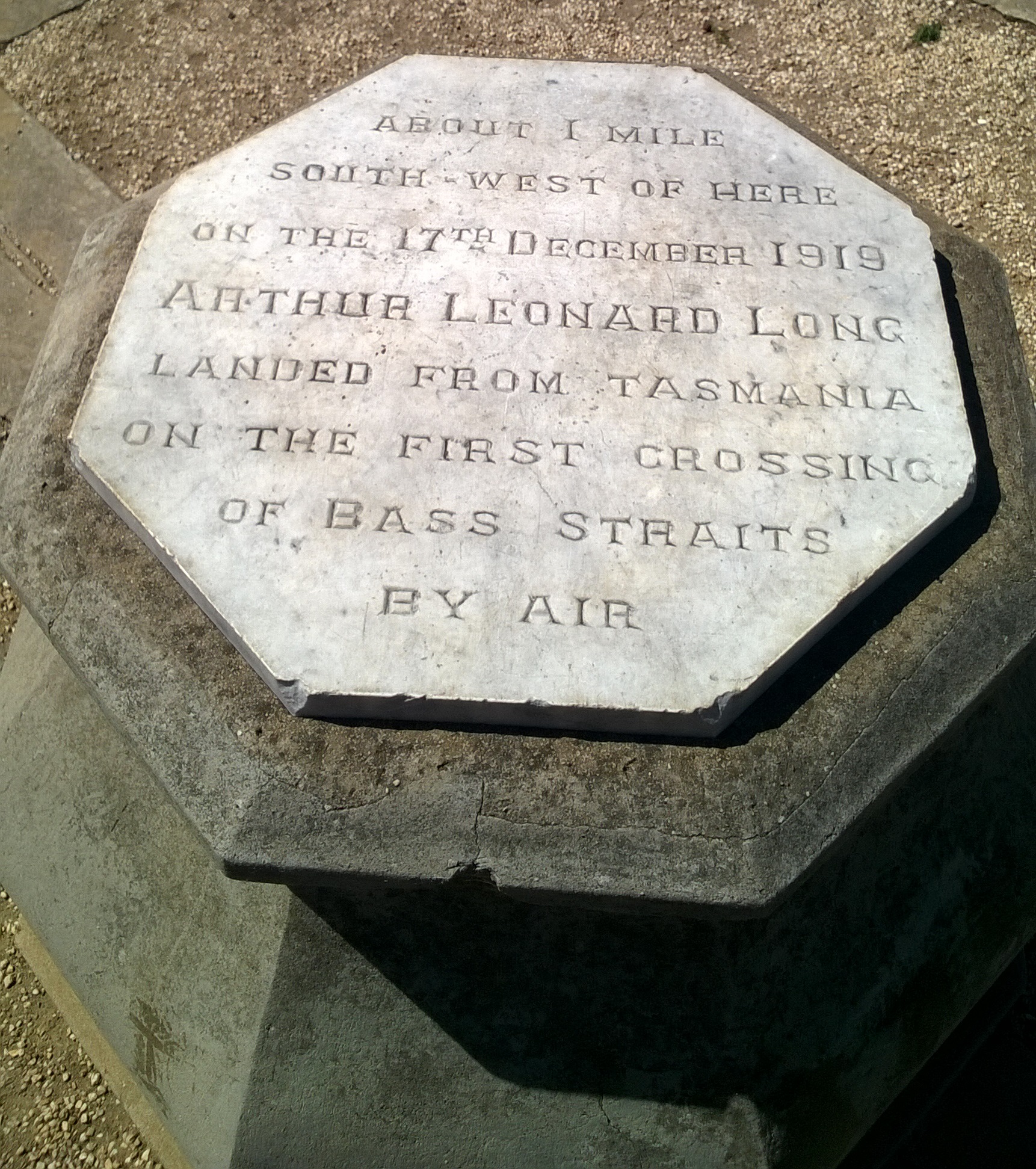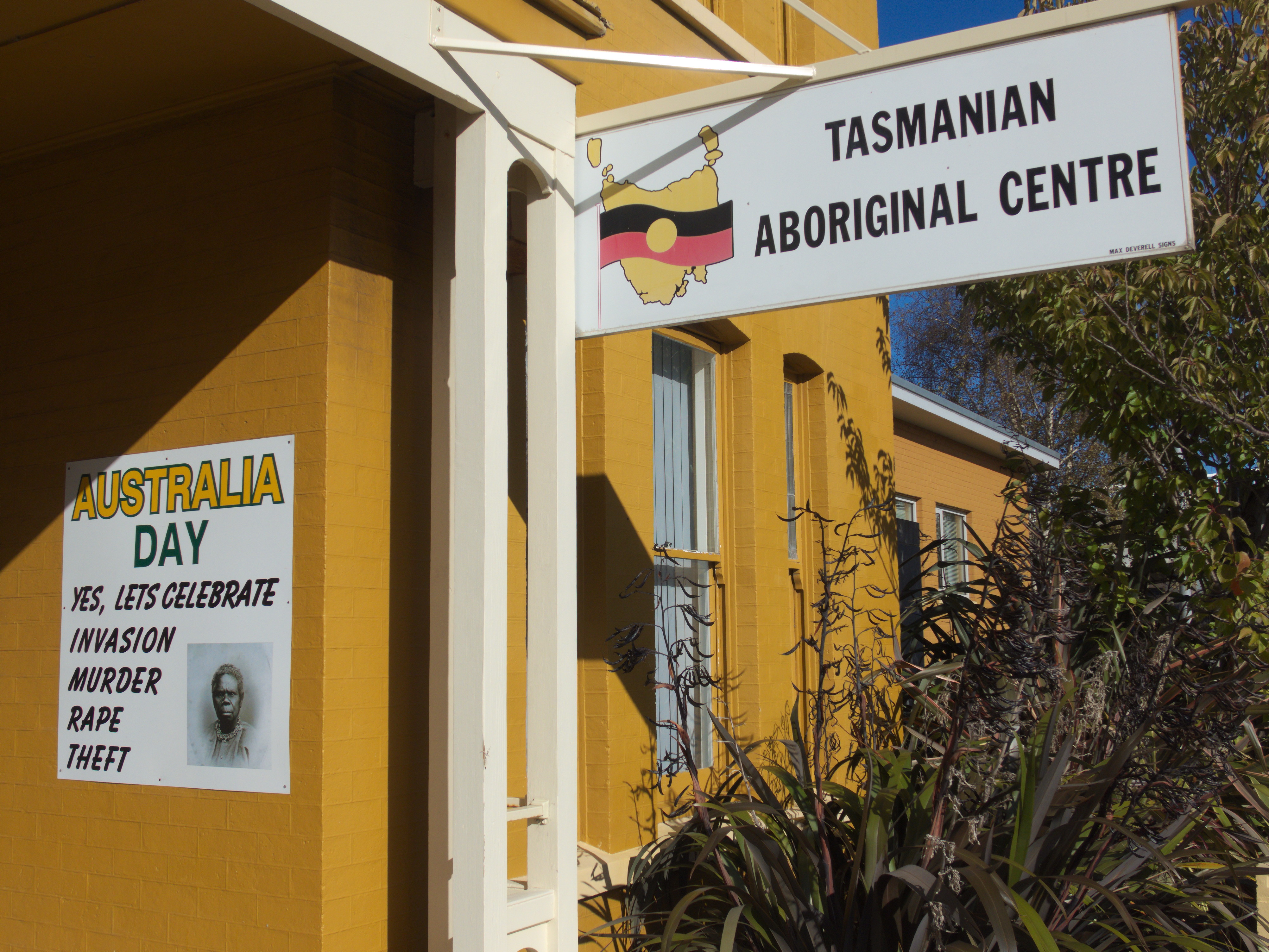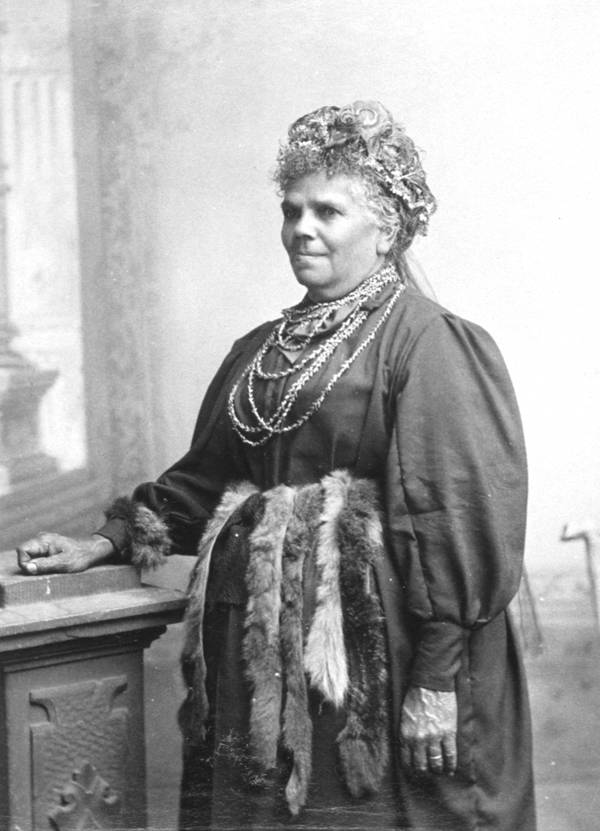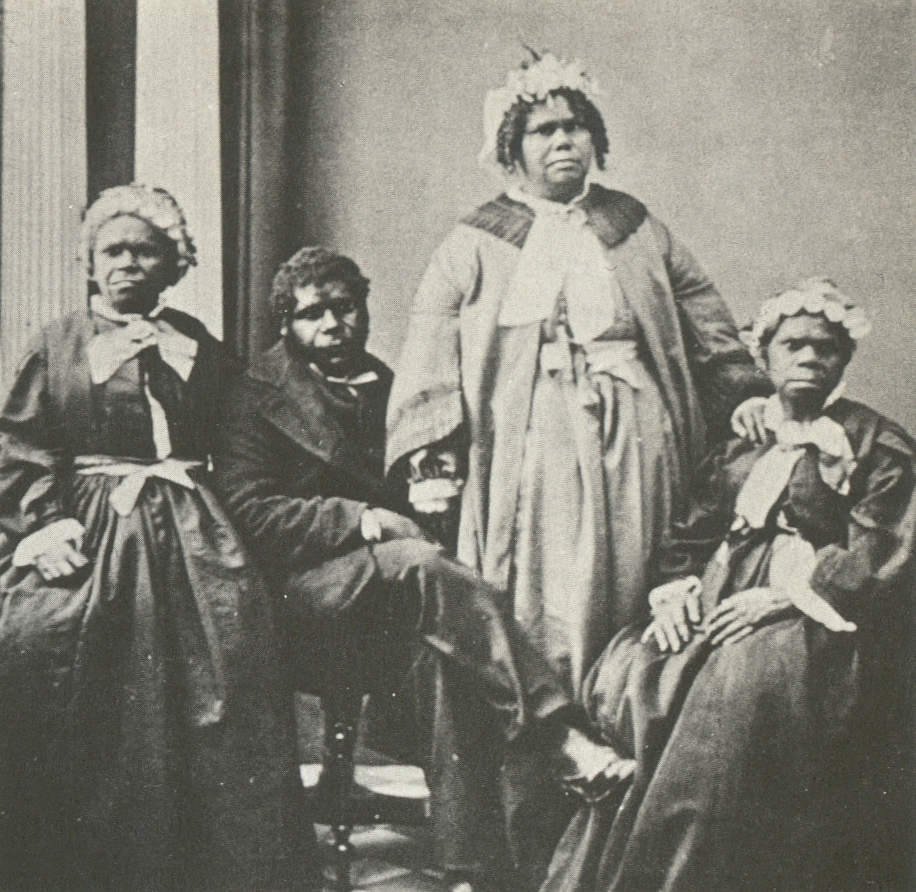|
Lia Pootah
The Lia Pootah are a Tasmanian group who claim descent from both Tasmanian Aboriginal women of several kinship groups and European men (free settlers, soldiers and convicts) who arrived in Van Diemen's Land from 1803 onwards. They are distinct from the Palawa, a group of Aboriginal descent whose immediate ancestors hail mostly from the islands of Bass Strait. Origins The Lia Pootah claim a connection with two main groups, the people of the Waddamanna (big rivers) and the people of the Huon. These kinship groups are defined as Teen Toomele Menennye (Big River) and Tahune Linah (Huon) respectively. Some of the Lia Pootah claim to be descended from the people of Bruny Island and from the Toogee of Tasmania’s West Coast. Others claim an origin on the East Coast and in the Central Highlands. The Lia Pootah say that it is inaccurate to claim (as some historians have done) that all Aboriginal people were removed from the Tasmanian mainland in the nineteenth century. They maintain t ... [...More Info...] [...Related Items...] OR: [Wikipedia] [Google] [Baidu] |
Tasmania
Tasmania (; palawa kani: ''Lutruwita'') is an island States and territories of Australia, state of Australia. It is located to the south of the Mainland Australia, Australian mainland, and is separated from it by the Bass Strait. The state encompasses the main island of Tasmania, the List of islands by area#Islands, 26th-largest island in the world, and the List of islands of Tasmania, surrounding 1000 islands. It is Australia's smallest and least populous state, with 573,479 residents . The List of Australian capital cities, state capital and largest city is Hobart, with around 40% of the population living in the Greater Hobart area. Estimated resident population, 30 June 2017. Tasmania is the most decentralised state in Australia, with the lowest proportion of its residents living within its capital city. Tasmania's main island was first inhabited by Aboriginal Australians, Aboriginal peoples, who today generally identify as Palawa or Pakana. It is believed that Abori ... [...More Info...] [...Related Items...] OR: [Wikipedia] [Google] [Baidu] |
Australian Aborigines
Aboriginal Australians are the various indigenous peoples of the Australian mainland and many of its islands, excluding the ethnically distinct people of the Torres Strait Islands. Humans first migrated to Australia 50,000 to 65,000 years ago, and over time formed as many as 500 language-based groups. In the past, Aboriginal people lived over large sections of the continental shelf. They were isolated on many of the smaller offshore islands and Tasmania when the land was inundated at the start of the Holocene inter-glacial period, about 11,700 years ago. Despite this, Aboriginal people maintained extensive networks within the continent and certain groups maintained relationships with Torres Strait Islanders and the Makassar people of modern-day Indonesia. Over the millennia, Aboriginal people developed complex trade networks, inter-cultural relationships, law and religions, which make up some of the oldest, and possibly ''the'' oldest, continuous cultures in the world. At ... [...More Info...] [...Related Items...] OR: [Wikipedia] [Google] [Baidu] |
Van Diemen's Land
Van Diemen's Land was the colonial name of the island of Tasmania during the European exploration of Australia, European exploration and colonisation of Australia in the 19th century. The Aboriginal Tasmanians, Aboriginal-inhabited island was first visited by the Dutch ship captained by Abel Tasman in 1642, working under the sponsorship of Anthony van Diemen, the Governor-General of the Dutch East Indies. The British retained the name when they established a settlement in 1803 before it became a separate colony in 1825. Its Penal colony, penal colonies became notorious destinations for the Convicts in Australia, transportation of convicts due to the harsh environment, isolation and reputation for being escape-proof. The name was changed to Tasmania on 1st January 1856 to disassociate the island from its convict past and to honour its discoverer, Abel Tasman. The old name had become a byword for horror in England because of the severity of its convict settlements such as Macq ... [...More Info...] [...Related Items...] OR: [Wikipedia] [Google] [Baidu] |
Bass Strait
Bass Strait () is a strait separating the island state of Tasmania from the Mainland Australia, Australian mainland (more specifically the coast of Victoria (Australia), Victoria, with the exception of the land border across Boundary Islet). The strait provides the most direct waterway between the Great Australian Bight and the Tasman Sea, and is also the only maritime route into the economically prominent Port Phillip Bay. Formed 8,000 years ago by rising sea levels at the end of the last glacial period, the strait was named after English explorer and physician George Bass (1771–1803) by History of Australia (1788–1850), European colonists. Extent The International Hydrographic Organization defines the limits of Bass Strait as follows: :''On the west.'' The eastern limit of the Great Australian Bight [being a line from Cape Otway, Australia, to King Island (Tasmania), King Island and thence to Cape Grim, the northwest extreme of Tasmania]. :''On the east.'' The western li ... [...More Info...] [...Related Items...] OR: [Wikipedia] [Google] [Baidu] |
Huon Valley
The Huon Valley, often shortened to the Huon, is a rural region and river valley in southern Tasmania, Australia. Centred on the lower reaches of the Huon River, it was historically renowned for its apple orchards. Today the valley’s economy also features high‑value cherry production, extensive salmon aquaculture concentrated around Port Huon, and a growing visitor economy. The valley’s apple heritage is celebrated through events such as the Huon Valley Mid‑Winter Festival and local “Apple Queen” traditions. Huonville is the commercial centre, with smaller settlements lining the river and its tributaries. The area is administered by the Huon Valley Council, whose boundaries extend south to Southport (Australia’s southernmost permanent settlement) and encompass an estimated population of in 2024. Geography The Huon Valley is situated in the southern part of Tasmania, covering an area of approximately . The valley is dominated by the Huon River, which flows ... [...More Info...] [...Related Items...] OR: [Wikipedia] [Google] [Baidu] |
Bruny Island
Bruny Island is a coastal island of Tasmania, Australia, located at the mouths of the Derwent River and Huon River estuaries on Storm Bay on the Tasman Sea, south of Hobart. The island is separated from the mainland by the D'Entrecasteaux Channel. The island and the channel are named after French explorer, Antoine Bruni d'Entrecasteaux. The island's Aboriginal name is lunawanna-allonah, from which the island settlements of Alonnah and Lunawanna are named. History Bruny Island was inhabited by Aboriginal Tasmanians people. Some people living on the island identify as being of Aboriginal descent. Abel Tasman was the first recorded European to sight the island, in November 1642 but did not determine it was an island. On 11 March 1773, Tobias Furneaux was the first British explorer to reach the island and his ship anchored at Adventure Bay (named after his ship) for four days and the crew ascertained the land was an island. Four years later, on 26 January 1777, James Cook' ... [...More Info...] [...Related Items...] OR: [Wikipedia] [Google] [Baidu] |
Tasmanian Aboriginal Centre
The Tasmanian Aboriginal Centre (TAC) is a human-rights and cultural organisation for Aboriginal Tasmanians. It was originally founded as the Tasmanian Information Centre in 1973 and has campaigned on land return, Aboriginal identity and return of stolen remains. Language revival The Tasmanian languages were decimated after the British colonisation of Tasmania#Impact on the native population, British colonisation of Tasmania and the Black War. The last native speaker of any of the languages, Fanny Cochrane Smith, died in 1905. In 1972, Robert M. W. Dixon and Terry Crowley (linguist), Terry Crowley investigated reconstructing the Tasmanian languages from existing records, in a project funded by the Australian Institute of Aboriginal and Torres Strait Islander Studies, Australian Institute of Aboriginal Studies. This included interviewing two granddaughters of Fanny Cochrane Smith, who provided "five words, one sentence, and a short song". They were able to find "virtually no data ... [...More Info...] [...Related Items...] OR: [Wikipedia] [Google] [Baidu] |
Dolly Dalrymple
Dolly Dalrymple (c. 1808–1864) was a Tasmanian Aboriginal woman. She was a known figure in the Tasmanian colonial legends. Biography Dolly Dalrymple was born on one of the Furneaux Islands, between Victoria and Tasmania, to Woretemoeteyenner (also known as Pung or Margaret), daughter of the chief Mannarlargenna from Van Diemen's Land, and George Briggs from Bedfordshire, England. Her mother was either kidnapped by or paid to live with Briggs, who later sold her on to another sealer for a guinea. Dolly Dalrymple became the foster child of the surgeon Jacob Mountgarrett (1773–1828), of Port Dalrymple, who had her baptised with the surname Dalrymple and educated her in Western domestic chores. From 1825, she lived with the convict Thomas Johnson (1801–1867), with whom she had several children and married six years later, in October 1831. Earlier in the same year she had successfully defended her hut and children against an attack by Aboriginals while Johnson was away. She was ... [...More Info...] [...Related Items...] OR: [Wikipedia] [Google] [Baidu] |
Fanny Cochrane Smith
Fanny Cochrane Smith (; December 1834 – 24 February 1905) was an Aboriginal Tasmanian considered to be the last fluent speaker of the Flinders Island lingua franca and thus the Tasmanian languages. Her wax cylinder recordings of songs are the only audio recordings of any of Tasmania's indigenous languages. Her recordings were inducted into the UNESCO Australian Memory of the World Register in 2017. Early life Fanny Cochrane's mother Tanganutura and a man named Nicremeric (or Nicermenic), sometimes reported as her father, were two of the Aboriginal Tasmanian people settled on Flinders Island in the 1830s by George Augustus Robinson. According to Norman Tindale, her legal father was Cottrel Cochrane, due to his European descent, and Nicremeric was her stepfather. She was born at Settlement Point (or Wybalenna, meaning Black Man's House) on Flinders Island. It is not known whether she was given an Aboriginal name by her parents; Robinson renamed all the Indigenous Tasmanian p ... [...More Info...] [...Related Items...] OR: [Wikipedia] [Google] [Baidu] |
Michael Mansell
Michael Alexander Mansell (born 5 June 1951) is a Tasmanian Aboriginal (Palawa) activist and lawyer who has campaigned for social, political and legal changes. Mansell is partly of Palawa descent from the Trawlwoolway group on his mother's side and from the Pinterrairer group on his father's side, both of which are Indigenous groups from north-eastern Tasmania. Early life Mansell was born in 1951 in Launceston, Tasmania, the son of Clyda and Clarence Mansell. He is a third-generation Cape Barren Islander, descended from the unions of Bass Strait sealers and Aboriginal women, including Watanimarina and Thomas Beeton (parents of Lucy Beeton) and Black Judy and Edward Mansell. Mansell's parents grew up on the Cape Barren Island reserve and moved to Launceston after World War II for employment reasons. The family remained connected with Cape Barren Island and the muttonbirding industry. As a child he lived for periods in Lefroy and George Town, attending high school in the lat ... [...More Info...] [...Related Items...] OR: [Wikipedia] [Google] [Baidu] |
Aboriginal Tasmanian
The Aboriginal Tasmanians (palawa kani: ''Palawa'' or ''Pakana'') are the Aboriginal people of the Australian island of Tasmania, located south of the mainland. At the time of European contact, Aboriginal Tasmanians were divided into a number of distinct ethnic groups. For much of the 20th century, the Tasmanian Aboriginal people were widely, and erroneously, thought of as extinct and intentionally exterminated by white settlers. Contemporary figures (2016) for the number of people of Tasmanian Aboriginal descent vary according to the criteria used to determine this identity, ranging from 6,000 to over 23,000. First arriving in Tasmania (then a peninsula of Australia) around 40,000 years ago, the ancestors of the Aboriginal Tasmanians were cut off from the Australian mainland by rising sea levels 6000 BC. They were entirely isolated from the outside world for 8,000 years until European contact. Before British colonisation of Tasmania in 1803, there were an estimated ... [...More Info...] [...Related Items...] OR: [Wikipedia] [Google] [Baidu] |
Palawa Kani
Palawa kani is a constructed language created by the Tasmanian Aboriginal Centre as a composite Tasmanian languages, Tasmanian language, based on reconstructed vocabulary from the limited accounts of the various languages once spoken by the Aboriginal Tasmanians, Aboriginal people of what is now Tasmania (palawa kani: ). The centre wishes to restrict the availability of the language until it is established in the Aboriginal Tasmanian community and claims copyright. The Declaration on the Rights of Indigenous Peoples, United Nations Declaration on the Rights of Indigenous Peoples (UNDRIP) is used to support this claim to copyright as it declares that indigenous people have the right to control their "cultural heritage, traditional knowledge, and traditional cultural expressions" and that states must "recognise and protect the exercise of these rights". However, the declaration is legally non-binding and languages cannot receive copyright protection in many countries, including Au ... [...More Info...] [...Related Items...] OR: [Wikipedia] [Google] [Baidu] |







